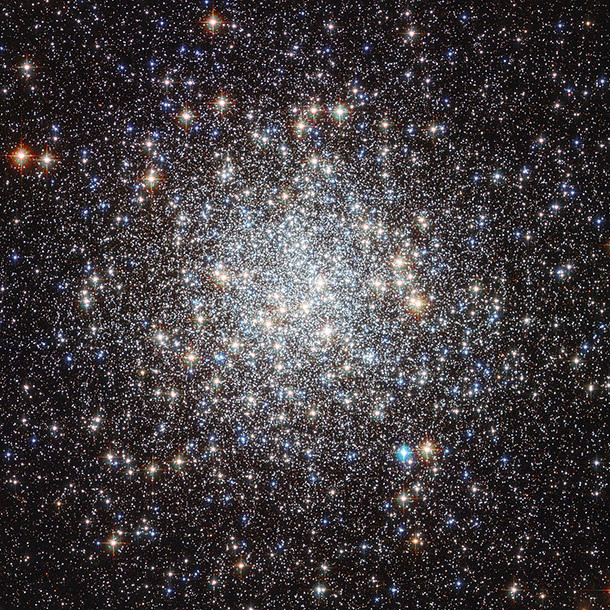Create a free profile to get unlimited access to exclusive videos, sweepstakes, and more!
Desktop Project Part 12: The galactic deep diver M9

[The Desktop Project is my attempt to clear off all the amazing images I've been collecting on my computer's desktop over the past few weeks - I'll post one great picture every day until they're gone. That way, I clear off my computer and you get to drink in a beautiful image and some science. Everyone wins!]
I love globular clusters. They're amazing objects: hundreds of thousands of stars all orbiting each other like bees around a beehive, incredibly old (most are well over 10 billion years and counting), and are a laboratory of how stars age and die. And I used to love looking at them through my own telescope when I was a kid, avidly going from one to another.
M9, though, isn't one that I remember observing. I'm not sure why. It's easily bright enough to see, and big enough to get a sense of its globularness. But even if I had seen it, I don't think it would've looked quite as amazing as this shot from Hubble:
[Click to hugely apiaryenate.]
Yegads. Funny though: all in all, as globulars go, M9 is rather unremarkable. It's average in size, in distance (about 25,000 light years from Earth), and in most other ways. It does have the distinction of being the globular cluster nearest the center of the Milky Way, lying less than 6000 light years from the core. But that's a bit of a cosmic coincidence: globulars orbit the Milky Way, so whichever one is closest is just a matter of orbital characteristics and time.
Still, hmmm. I imagine M9's orbit must be pretty elliptical to bring it that close in, though. Some globulars orbit very far out on paths that never take them too close to the center. So perhaps in this way it is interesting. Why is its orbit shaped like that? Did it interact with some other object billions of years ago, changing a circular orbit into one that's elongated? Its velocity through space is relatively high (PDF) as you might expect from an object at the bottom of its orbit-- a position called perigalacticon, if you want to impress your friends at parties.
And yet, for all its unremarkableness, look at it! It's gorgeous! Even the mundane in astronomy possess surpassing beauty. It's another reason I love this science so much.
Image credit: NASA & ESA
Related Posts:
- Itâs full of stars!
- A distant sparkling eruption of diamonds
- Sparkly
- Desktop Project Part 3: The massive massiveness of M54



























